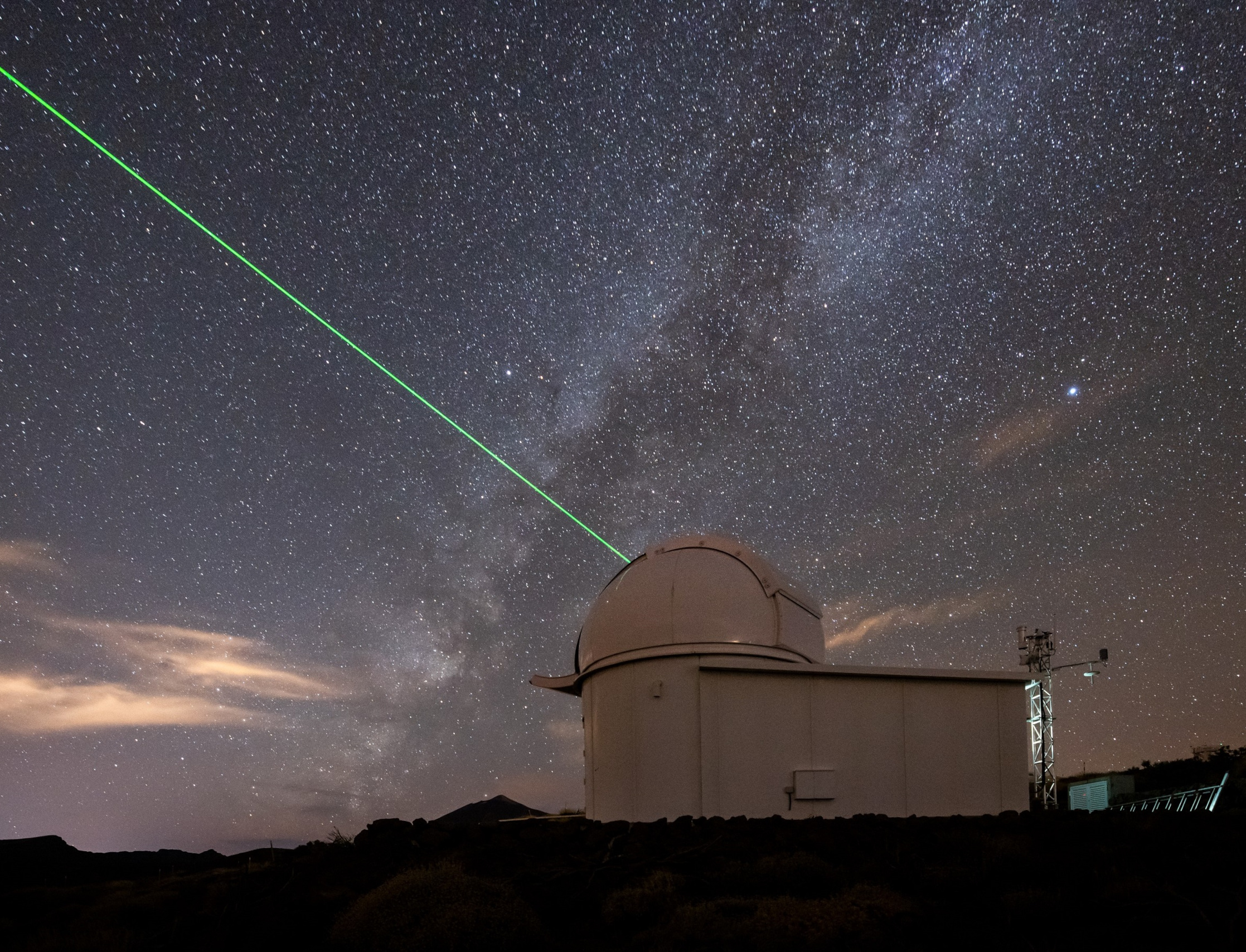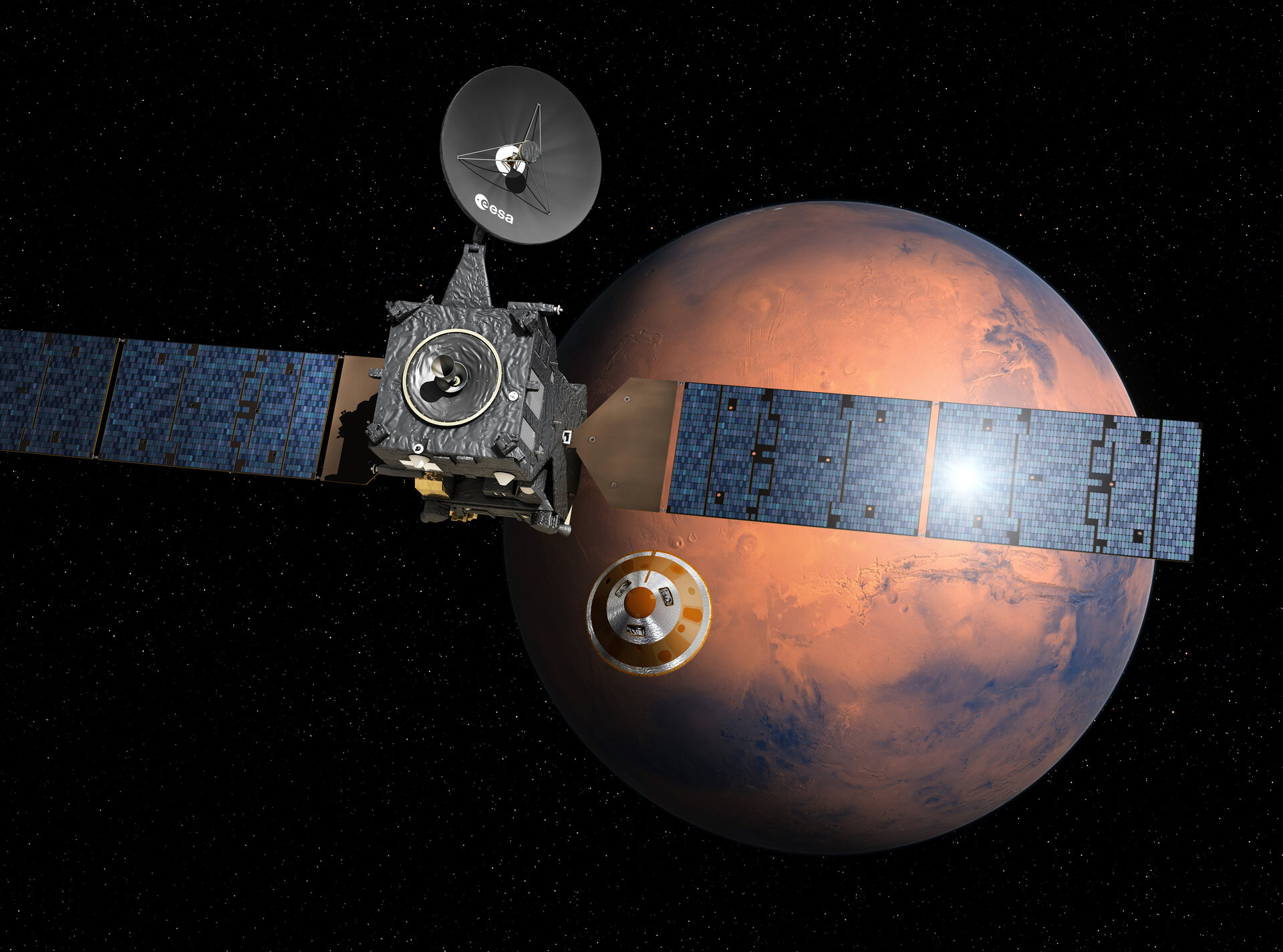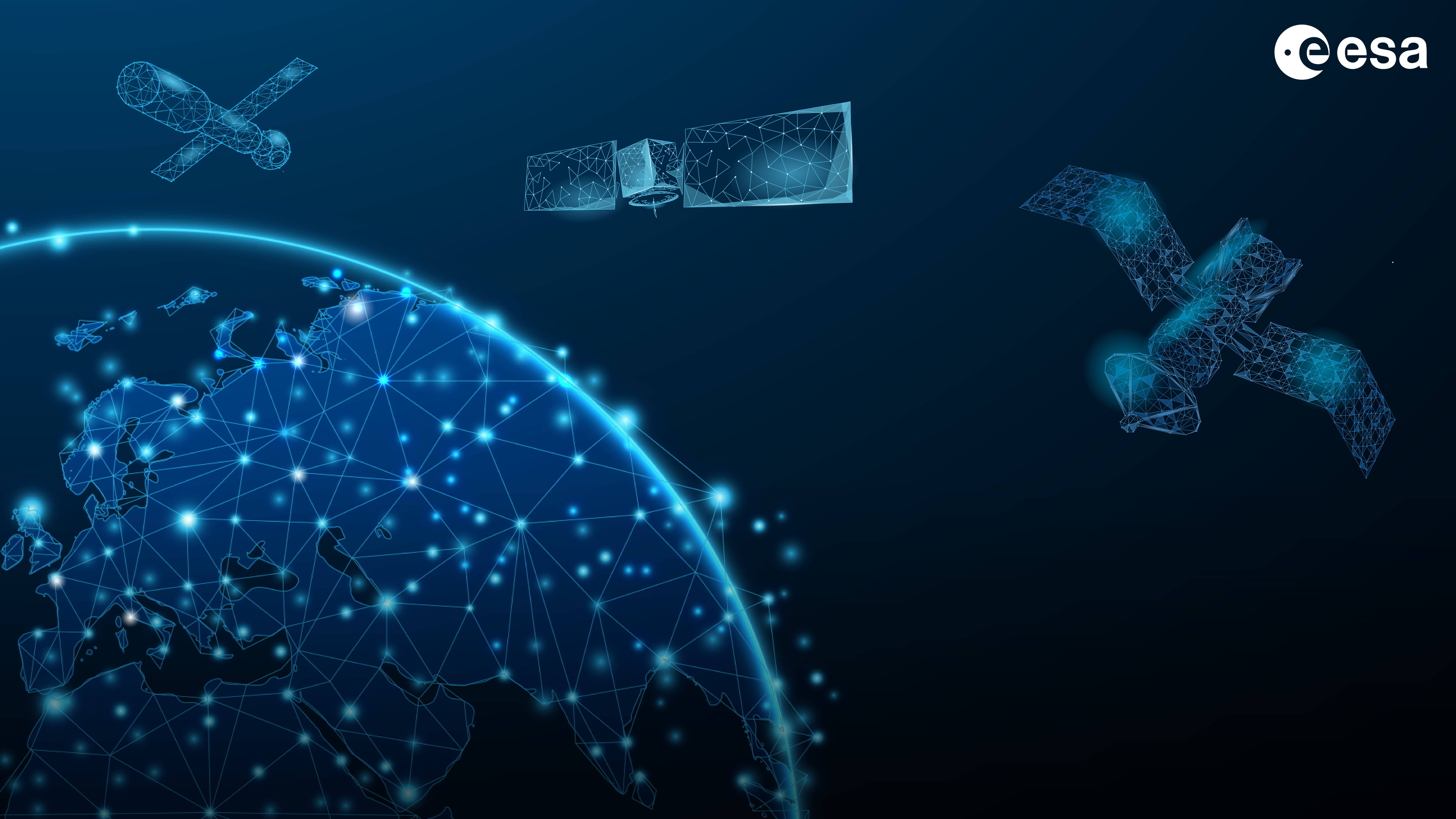Software upgrade for 19-year-old martian water-spotter
The MARSIS instrument on ESA’s Mars Express spacecraft, famous for its role in the discovery of signs of liquid water on the Red Planet, is receiving a major software upgrade that will allow it to see beneath the surfaces of Mars and its moon Phobos in more detail than ever before.
Mars Express was ESA’s first mission to the Red Planet. Launched 19 years ago, on 2 June 2003, the orbiter has spent almost two decades studying Earth’s neighbour and revolutionising our understanding of the history, present and future of Mars.
MARSIS – water on the Red Planet
The Mars Advanced Radar for Subsurface and Ionospheric Sounding (MARSIS) instrument on Mars Express was crucial in the search for and discovery of signs of liquid water on Mars, including a suspected 20-by-30 km lake of salty water buried under 1.5 km of ice in the southern polar region.
Operated by the Istituto Nazionale di Astrofisica (INAF), Italy, and fully funded by Italian Space Agency (ASI), MARSIS sends low-frequency radio waves down towards the planet using its 40-metre long antenna.
Most of these waves are reflected from the planet’s surface, but significant amounts travel through the crust and are reflected at boundaries between layers of different materials below the surface, including ice, soil, rock and water.
By examining the reflected signals, scientists can map the structure below the surface of the Red Planet to a depth of a few kilometres and study properties such as the thickness and composition of its polar ice caps and the properties of volcanic and sedimentary rock layers.
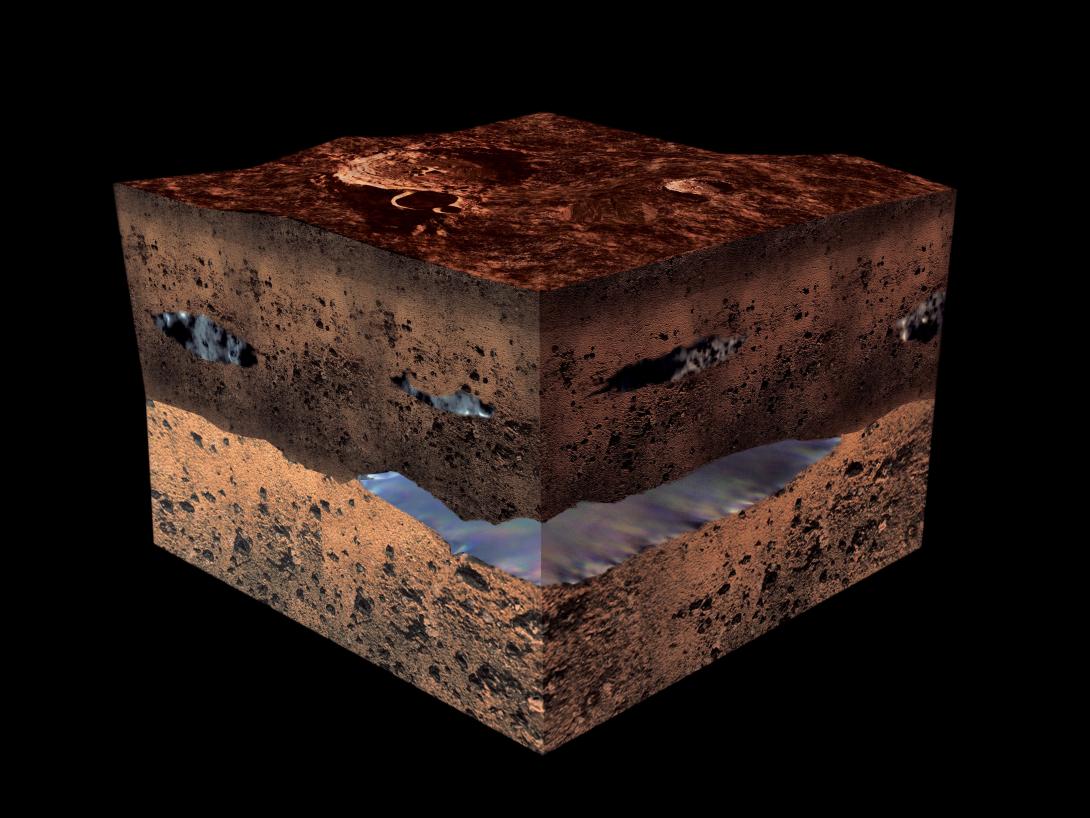
From Windows 98 to Mars 2022
“After decades of fruitful science and having gained a good understanding of Mars, we wanted to push the instrument’s performance beyond some of the limitations required back when the mission began,” Says Andrea Cicchetti, Deputy PI and MARSIS Operation Manager at INAF, who led the development of the upgrade.
“We faced a number of challenges to improve the performance of MARSIS,” says Carlo Nenna, MARSIS on-board software engineer at Enginium, who is implementing the upgrade. “Not least because the MARSIS software was originally designed over 20 years ago, using a development environment based on Microsoft Windows 98!”
Two new operating modes were designed for MARSIS. Both allow the instrument to process data while continuing to transmit and receive signals, where previously one activity would have to be paused to do the other. This greatly increases the amount of time that can be spent exploring the mysteries below the martian surface.
Additional new algorithms optimise signal reception, improve scientific data quality, improve spatial resolution in the North-South direction (along the direction Mars Express passes overhead) and allow for the characterisation of surface and subsurface features on Mars and its moon Phobos in much higher detail.
Eyes on Phobos
The first new mode, Sub Surface Phobos (SSP), was primarily designed to optimise observations of Mars’ moon Phobos, which was not thought of as a possible target when Mars Express first launched, but will also improve observations of the Red Planet itself.
“Previously, to study small, important features on Mars, and to study Phobos at all, we relied on a complex on-board software configuration called Super Frame (SF),” says Andrea Cicchetti, MARSIS Operations Manager at INAF. “SF stores a lot of high-resolution data very quickly and severely limits how long we can observe a target before the instrument’s on-board memory fills up.”
“By discarding data that we don’t need, SSP allows us to switch MARSIS on for five times as long and explore a much larger area with each pass. Where we were previously limited to 25 seconds per flyby, now we can record 134 seconds of observations.”
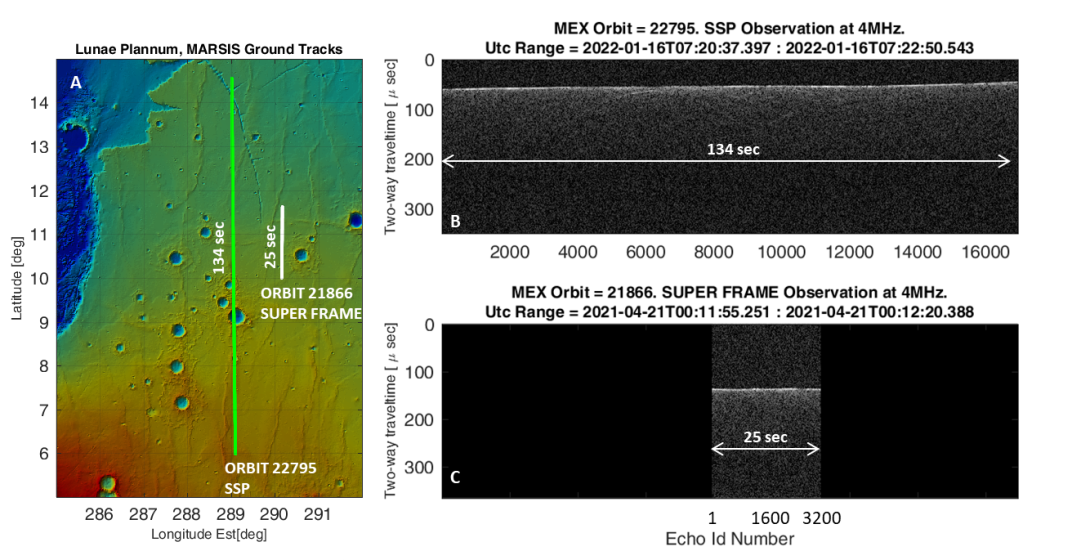
Reducing the pressure on the spacecraft’s on-board data handler will even make it possible to operate multiple Mars Express instruments – MARSIS, PFS and SPICAM – simultaneously.
SSP also optimises the receiver gain adaptively during an observation, improving the dynamic range of the recorded science data.
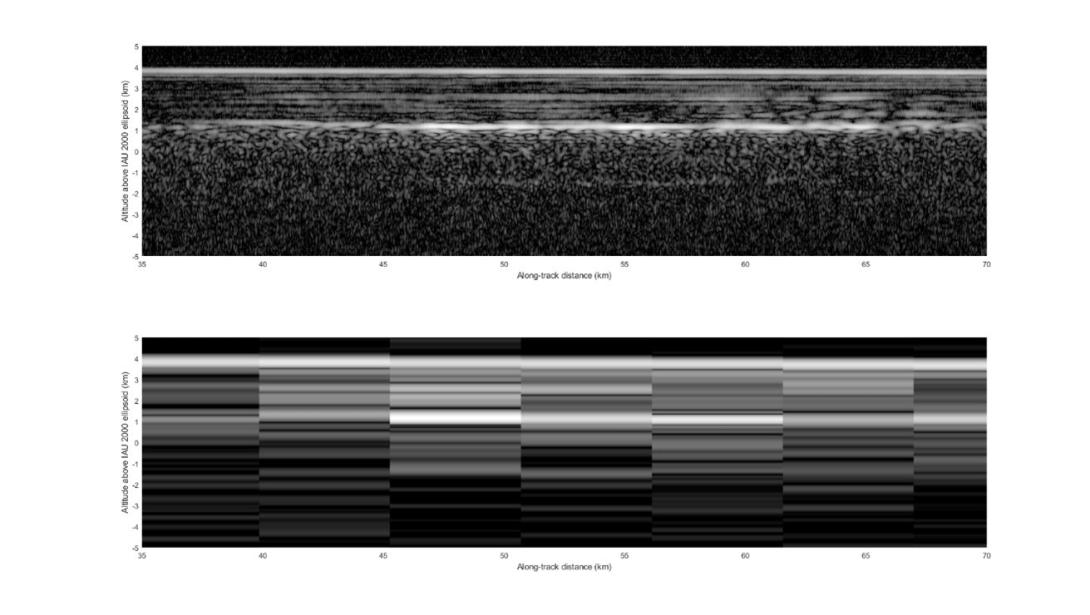
SSP mode is now fully operational on Mars Express.
More water discoveries to come?
The second new mode, Sub Surface Mars (SSM), will allow the most significant and scientifically interesting high-resolution MARSIS data to be extracted from the total raw dataset on board Mars Express.
Discarding low-value data on board the spacecraft before sending any data back to Earth saves limited communication bandwidth and ensures that all data arriving on Earth is useful and can be processed with dedicated and more efficient algorithms.
SSM will allow MARSIS to collect 90 minutes of high-resolution echo data every day compared to a maximum of three SF observations, each up to 25 seconds long, previously.
“There are many regions in the southern martian polar cap where the MARSIS data suggest there could be liquid water. The new MARSIS software modes will let us investigate these more closely,” says Roberto Orosei, MARSIS Principal Investigator at INAF.
“SSM will help us more quickly and extensively study these regions in high resolution and confirm whether they are home to new sources of water on Mars. It really is like having a brand new instrument on board Mars Express almost 20 years after launch,” adds ESA Mars Express scientist Colin Wilson.
SSM mode is almost fully prepared. Commissioning will begin soon.
The martian workhorse
Old enough to vote in many places on Earth, Mars Express continues to deliver amazing science while remaining one of ESA’s lowest-cost missions to fly.
“Mars Express and MARSIS are still very busy,” says James Godfrey, Mars Express spacecraft operations manager at ESA’s ESOC mission operations centre in Darmstadt, Germany. “The team did a great job designing the new software, maximising its impact while keeping the patches as small as possible, helping us continue to get the most out of this veteran spacecraft.”

Find out more about the other new scientific and operational activities Mars Express has recently enabled on the Mars Express blog.
MARSIS was developed by the University of Rome, Italy, in partnership with NASA's Jet Propulsion Laboratory in Pasadena, California.
The INAF team acknowledges support from the Italian Space Agency (ASI) through contract ASI-INAF 2019–21-HH.0.

